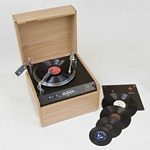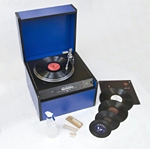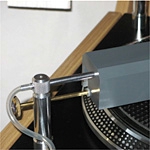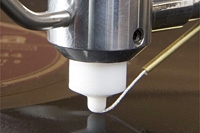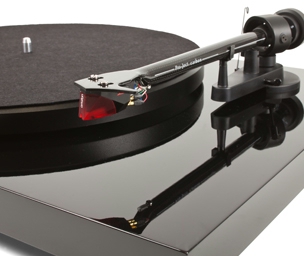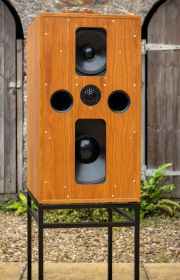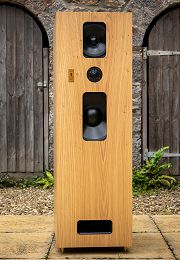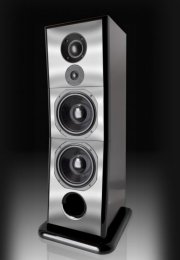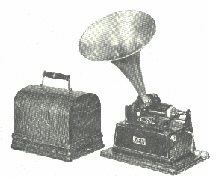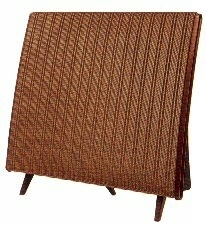FOR INQUIRIES PLEASE EMAIL: jtownrow@madasafish.com or CALL 0121 427 4740
We are clearly interested in supplying goods and services to our customers but at the same time we are constantly aware of the shortage of good and reliable information on sound reproduction issues.This site addresses those issues. It's a long site but I hope readers who persevere with it will find the content interesting and useful. The issues raised are very relevant to sound equipment selection. Our guiding principles are audio engineering and cost effectiveness. Undoubtedly truly high quality sound reproducton continues to be a source of great joy and to that end we have a somewhat purist philosophy. Where I'm "preaching to the converted" I apologise.
Please feel free to ask questions ( jtownrow@madasafish.com). I'll do my best to answer them.
COVID-19 LATEST
I am pleased to announce that the shop is open for business including visitors and demonstrations. We are generally available during our normal Tuesday to Saturday hours but with the mild constraint that we now operate an appointments system. Please email or call (07775 838165 or 0121 427 4740) to arrange a visit. This arrangement was driven by covid but it has worked so well we have decided to keep it for the extra flexibility it provides.
John Townrow FRAS
OVERVIEW ----- PRODUCTS & USE ----- PRICES ----- MYTHS & FACTS
ABOUT US.
The original shop, which was in Birmingham (UK), was opened in 1972. Our first shop was at Five Ways Edgbaston hence the name of the company. We moved to our present shop in 2004.
We have maintained our specialized approach to sound reproduction and still support "hi-fi" in its original sense. We think sound reproduction has more to do with engineering than with magic. Five Ways Hi-Fidelity Ltd. supplies new equipment only. A separate business "John Townrow Classic and Vintage" deals with classic, vintage and pre-owned items. This site (i.e. the Five Ways one) covers hi-fi issues in general so there are numerous references to classic products which are available from the other business. There are links to that business on this site.
We repair and rebuild valve amplifiers. We re-tip and rebuild cartridges. We supply special cartridges for playing 78rpm. records. We have a loudspeaker drive unit repair service which is very useful when replacement originals are no longer available. We service and align REVOX B77 tape recorders. We have a fully equipped mechanical engineering workshop with extensive machining facilities. These facilities are rare if not unique among hi-fi dealers. They enable us to undertake a wide variety of custom work, particularly with record playing equipment. We have a record cleaning service which uses a Keith Monks professional machine.
In short, we cover the products and technologies of the last century rather well. This does not mean we are locked into the past. We cover leading edge modern products and technologies as well. Visitors are welcome Tuesday to Friday 10-30 to 6-00 and Saturday 10.30-5.00 (currently by appointment following on from our covid management policy).
We have a demonstration room where visitors may audition our favourites but increasingly we are dealing with customers who are too far away to travel to our shop. Today there are many parts of the UK which are no longer served by true hi-fi specialists. In such cases we do our best to help on the telephone and are happy to supply by mail order. The number of specialized retailers with proper audio engineering knowledge and expertise is now very small, so we commonly get visitors from more than 100 miles away.
Enthusiasm for high quality sound reproduction now exists throughout the world so we are geared up for tax free exporting to many countries (but not all!).
Historically we worked closely with AVI for more than 25 years so a few words are appropriate regarding this relationship. For most of that time AVI made hi-fi separates. These were world class products and still have an enviable reputation. Some of these iconic products are illustrated in a later section on this site but are now only available second hand. Around fifteen years ago AVI took the bold step of discontinuing all its separates (amplifiers, tuners, CD players, passive loudspeakers) in favour of the newly developed ADM9s. These were active loudspeakers. They had an amplifier for each drive unit, built in top class DAC (digital to analogue converter), USB connection and remote control volume. Later they had two digital inputs and one analogue input.The ADM9s were successful but the success was tempered by the established preferance for separates.
(UPDATE ON AVI Sadly AVI has now disappeared from our portfolio of suppliers. There is currently no production. AVI is passing into history. A consortium was assembled to revive the brand but progress has ground to a halt. The active speakers can't be re-introduced because some of the components are no longer available. A re-design would be called for and most likely a price increase as well. . There is much positive coverage of AVI products on our site. This remains as valid as ever. We've kept it on as a useful source regarding second hand items and as worthy history. There is a caveat. Second hand AVI amplifiers are well supported (by PDG Electronics 0208 426 5980) but AVI active speakers are not. We continue to supply replacement remote controls for both early and late ADM9 etc. ADM9s and DM10s were outstanding in terms of cost effectiveness. They provided a very high standard of performance for modest cost. Active speakers from other makers and which give similarly high standards of performance were and are considerably more expensive. The AVI range of active speakers was an anomally which we do not expect to be repeated. Consequently our focus is currently on the separate amplifier/speaker approach. Despite the engineering advantages of the active approach there is no doubt that most enthusiasts still prefer separate amplifiers and speakers. Happily we are an agent for speakers from Graham Audio. This company is a master of passive speaker design.
Illustrated to the right are some of the models from Graham Audio. In order they are: LS5/9 LS6F LS6 LS3. All are shown with their grills removed.
60 YEARS IN BRIEF
The hi-fi market has changed hugely in the last 20 years. In the seventies and early eighties the hi-fi system was the aspirational consumer durable and generally all the rage. Whether we like it or not the term "hi-fi" has passed into general usage for describing any domestic sound system. It is short for "high fidelity" which was first used in this context over sixty years ago when enthusiasts who were disappointed by the poor standards of reproduction provided by mass market products wanted to produce results which were much better. By the turn of the century hi-fi in the original sense had become a niche market for connoisseurs appealing only to those who value high quality sound reproduction (music or other programme material) or have an interest in the equipment, past or present, which is used to achieve it. Faithful and realistic reproduction of musical instruments and human voices (or indeed any other acoustic event) continues to be a worthy and useful objective but it deserves a wider audience today especially as equipment costs can be lower in real terms if informed choices are made. What is also interesting is that today there is a divergence from the "high-fidelity" concept at both ends of the price scale. Some ultra expensive equipment available today sounds dire and in no sense addresses the "high-fidelity" issue. Some is so bad that it puts people off hi-fi for ever. Much equipment which superficially sounds impressive is actually wrong i.e. inaccurate, coloured, distorted and ultimately fatiguing but by then the money has been spent.
The new century has seen huge developments in sourcing and storing program material digitally. Nevertheless, music libraries stored on computers and iPods still need first rate amplifiers and loudspeakers for the best results. Sometimes a separate DAC is also required. This is usually where the one built into the computer isn't good enough. It is worth pointing out that an iPod with files recorded in "lossless" and using its on board DAC gives results surprisingly close to those with CD players. That's how much things have changed. We feel it is very important to embrace and incorporate these new technologies. We have no problem combining modern digital sources with classic separates systems. We cover sound reproduction issues from vintage to leading edge.
We have a comprehensive portfolio of suppliers to cover domestic hi-fi. We try to recommend the best equipment for the job in hand and if this turns out to be something we don't sell we'll say so.
A BIT MORE HISTORY
Electric recording, i.e. with microphones, electronics and electromechanical devices, came in around 1925. It was a huge step forwards. Before that recordings were made and replayed entirely mechanically. It was only the direct sound from the performers which drove the stylus which modulated a groove on the wax master. This limited both what could be recorded and how well it could be recorded. After 1925 78RPM records became progressively much better as is very apparent when these old recordings are played on suitable modern equipment. We've always been better at recording sound than replaying it. Most of the replay equipment of the day wasn't really up to the job - at least in respect of domestic equipment.
At around the same time (1926-28) cinema made the transition from silent films to sound films. This was a huge driving force for sound reproduction. Electronics was very much in its infancy and suddenly it became necessary to design sound systems which would work in cinemas which before long might have capacities of 1000-2000 seats. Using the best valve electronics of the day, amplifiers were designed and built to give an output of about 20 watts (sometimes a bit more but not much). That does not seem to be much power to a modern enthusiast. This is how they did it. Most modern and near modern louspeaker systems as used for hi-fi and elsewhere are very low in efficiency (acoustic energy out/electrical energy in), As a percentage this is usually in single figures, often low single figures. What the cinema engineers did was to use drive units with mains energised magnets (wound field) and then to horn load them. In this way they were able to increase the efficiency to around 50% at least in terms of usefully directed output. The horn loading gave better coupling to the room and ensured that more of the out put was directed where it was wanted. It worked. 20 watts with 50% is the equivalent of 500 watts with 2%.
Many of these systems were in use well after WW2. Cinema sound equipment had been very much a case of necessity being the mother of invention. I see quite strong connections between what was done for the cinemas and the development of domestic hi-fi in the 1950s. I well remember being stunned by the sound quality in my local Granada cinema in the late 1950s. This was especially so when records were played between the films. To many people the cinema gave their first taste of high quality sound reproduction.
**


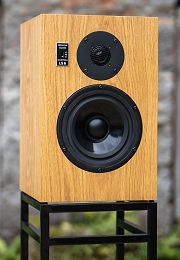

|
CLASSIC AND VINTAGE HI-FI EQUIPMENT AND ITS UTILITY. SOME NEW VERSUS OLD ISSUES. It is important to understand that high quality sound reproduction is essentially old tech. Results were available decades ago which compare favourably with the best available today. Consequently real progress is now slow. It is interesting that SME decided to re-manufacture the Garrard 301 and that Thorens has recently introduced an updated version of the classic TD124. Both these products started life in the 1950s. Key products from the past have been re-discovered, some a long time ago (e.g. Garrard 301, Thorens TD124, LS3/5a) others more recently (e.g. Quad 33/303, Spendor BC1). We've just learned that Quad has introduced a new pre/power combination and decided to call it 33 + 303. This is a clear acknowledgement of the staus of the classic 33 + 303 (which we strongly recommend). By now most of the truly excellent products from yesteryear have been identified by enthusiasts. This has the consequence that with fixed supply the prices are only going one way. Even so, many classic products, serviced where necesasary, are still more cost effective than new equivalents. Even with the new equipment we recommend and sell we tend to favour classical constructional methods where possible. Hand made British hi-fi products are well regarded worldwide with good reason. Today all too many manufacturers focus more on marketing than product merit. Often they are more interested in producing sculptures or furniture rather than presentable tools to do a job. Recently we have seen a huge resurgence of interest in open reel tape recording. This has increased demand for Revox tape recorders, especially the Revox B77 models. These machines are only available second hand and the prices have increased considerably in the last year or two. We continue to support the B77. It's true that digital technology has come along but ultimately a digital source becomes an analogue one as the DAC output is analogue and this is what the amplifier amplifies. It is a simple matter to add digital sources to an analogue system. It's fair to say that digital technology has had a lot to do with convenience and utility but not a lot to do with ultimate sound quality. First class sound quality may be achieved without it. There are some uncomfortable truths here for the industry but good news for end users. Summarizing: Solid state amplifiers. These were mature technology by the 1990s and some good examples were made in the previous 30 years or so. This means that carefully chosen second hand amplifiers are usually more cost effective than new ones of similar performance. Furthermore, when no longer wanted they may be resold for about the same as their purchase prices whereas new amplifiers often struggle to achieve half their original cost. It's worth remembering that much development has had more to do with reducing production costs than improving performance. I can think of no new amplifier which outperforms a serviced Quad 33/303 for the same cost. That's without even considering the aesthetics of classic British products. AVI 2000 Series pre/power combinations (still available second hand for around £1000 or even less but don't come up very often) are a very hard act to follow and new items of similar performance and specification cost thousands. We are thus at something of a loss when it comes to helping our customers with recommendations regarding new solid state (transistor) amplifiers. Furthermore we don't recommend any amplifier which relies on surface mount components. What we do like are the hand built Graham Slee models which we are happy to recommend and supply in cases where they are powerful enough to do the job (which they often are). Any new amplifier which meets our criteria is likely to be expensive irrespective of manufacturer.
Valve Amplifiers. Power amplifiers were fully developed before 1960. From then onwards it was simply a matter of execution rather than design. Modern resistors and capacitors are better and then, as now, the results were very dependent on the output transformers which were and are expensive components. Rebuilding old valve amplifiers using modern resistors and capacitors is a good idea. For those who want to use valve power amplifiers classic examples are very cost effective. Some of them have iconic status and consequently are sought after by collectors as well as users. They are usually resellable for around the purchase price and sometimes more. Loudspeakers. Passive moving coil loudspeaker technology topped out around 1980. There has been no significant development since then although there has been progress on available materials. Passive loudspeakers are the ones driven by external separate amplifiers and include the vast majority of domestic hi-fi loudspeakers.This technology is no longer the only route to the very highest standards of sound reproduction. Active loudspeaker technology is the other route. With new equipment it can be more cost effective (the section below on AVI covers this subject further). To be fair this view is based on using the AVI ADM9/DM10 series as a reference. These products were somewhat under priced for their capability and are no longer made. Similar products from other manufacturers were and are inclined to be rather more expensuive. Nevertheless a given standard of performance is potentially achievable at lower cost by using active technology than by using stand alone separate amplifiers and loudspeakers albeit at some cost to flexibility. Some passive classics give a very high standard of performance as do the best examples of new passive loudspeakers, provided, of course, that good amplification is used. This is a case of the most refined versions of the earlier technology versus the new. All passive loudspeaker systems need passive crossover networks and these are always a problem and one which is not always satisfactorily resolved. Active loudspeakers avoid this by using a different approach. Drive unit behaviour is of course a problem with both technologies as is cabinet behaviour. Having said all that it must be admitted that most enthusiasts prefer separates. Classics such as restored BC1s (see link below) are very cost effective. Having said that, good BC1s are not easily sourced as our separate S/H business knows all too well. Most offered for sale are at least partly defective and commonly require hundreds of miles driving for collection. Where very compact passive loudspeakers of the very highest standards are required S/H classics can cost more than new equivalents. For such applications we recommend the Chartwell/Graham LS3/5 which is a BBC licensed design. With some second hand LS3/5as now making well over £1000 a pair (and some over £2000) the new LS3/5s from Chartwell/Graham are something of a bargain at £1945 a pair. Recently added to the range is the Chartwell/Graham LS3. A pair of these is only £1322. It's an in house design which compares favourably with the BBC licensed LS3/5 and LS3/5a. The LS3s are the cheapest new serious high fidelity speakers we can offer. Larger loudspeakers which could replace BC1s and have the same attention to detail start below £4000. We can supply the Chartwell/Graham LS5/9 at £3839 per pair. This is another BBC licensed design. To be fair, it can be driven louder than the BC1 and is more robust. It is also a bit smaller than the BC1. It is a very accomplished design which carries our full recommendation in respect of both performance and build quality. This model is a good choice where "only new will do" or where seeking unmolested Spendor BC1s has proved too tedious. It is something of a universal speaker as it does a good job with heavy pop music as well. There is another good model from Chartwell/Graham at £2445. This is the LS6. Just introduced is a new model from the firm. This is the LS8/1. Much more on this below. The LS5/8 continues at £7785. Where passive loudspeakers are required for whatever reason the Chartwell/Graham range which is hand built in the UK is a hard act to follow. The video interview with Derek Hughes under "Technology" on the Graham site is strongly recommended as is the video on the home page. They provide much insight regarding developing high grade loudspeakers. www.grahamaudio.co.uk Record players. Here we can make a stonger case for buying new. It isn't that there are no good old record playing decks. It's quite the reverse. One problem is that of the good ones some have achieved an iconic status which goes way beyond their engineering merit and utility. Another is that because of the general strong interest in playing vinyl few second hand decks are coming to the market. For new decks costing less than £1000 we recommend the Project range where £400 - £500 will buy a very satisfactorey deck including an Ortofon cartridge. The new Project Debut Carbon EVO (£499) is already an award winner and carries our full recommendation. We normally have this model on demonstration. Significant improvement only comes with significantly larger budgets. We cover this area with the British built Origin Live models. We normally have an Origin Live turntable and arm on demonstration. All our record players are carefully set up before supply to customers unless this service is not required. Phono stages. These are pre-amplifiers which bring cartridge signals up to line level and also apply the RIAA correction to the frequency response. They are commonly stand alone devices and have been for some years. They are also found within some amplifiers and pre-amplifiers where they fulfil the same function.These integral phono stages are not generally of the highest standard and while OK for casual use are generally not good enough to satisfy the serious vinyl enthusiast. For serious use we recommend new stand alone devices e.g. models from Graham Slee or Lehmann. Cartridges. As these are at least in part consumables (because styli wear out) the utility of classics is limited by the cost effectiveness of rebuilds (£300 or so for a moving coil) or the availability of replacement stylus assemblies of adequate quality in the case of moving magnet types. It is possible to re-tip moving magnet types but this is only justified in the cases of more expensive examples. We are very familiar with classic and vintage hi-fi equipment and know the practicality of the various options. In this respect we particularly like Quad and AVI amplifiers because they rate highly in the utilitarian sense but are also well supported in respect of service and repairs. We always like to have examples available (indirectly, see link below) from both ranges, including Quad valve amplifiers. With loudspeakers we particularly like Spendor BC1s (hard to beat for accuracy and realism), AVI Neutrons (good compacts), AVI Pro9+s (very capable bookshelf speakers), Quad ESL 57s (because of what they are) and the Klipsch Heresy (not for accuracy and realism but for robustness, loudness, portability and friendly sound). There are other loudspeakers from the past which are worth considering but that's our short list. For second hand items please follow the link below. For people who want a seriously good and cost effective separates system it makes a lot of sense to mix well chosen classic products with new. On our recommendation this is likely to indicate a classic for the amplification (Quad or AVI), new for the record player (Project or Origin Live) and new for a CD player (because CD players have a limited life and are often unrepairable). With speakers it can go either way depending on availability. Exceptions are the aforementioned LS3/5 and the new LS3 for cases where space saving and compactness are issues. Classics to do the same job are likely to be roughly as expensive if available at all. At the "budget" level there is a plentiful supply of second hand amplifiers, receivers, CD players and loudspeakers at very low cost indeed sometimes free. There's a handful of currently produced passive loudspeakers which gives a standard of performance we like and a short list of classics. S/H amplification by AVI (2000 series pre/power combinations from the 1990s or LAB Series models from the 2000s) is good enough for anything. The Quad 303 is a very good power amplifier despite being an old design. A Quad 33 in a good state of service is fine for line level signals but perhaps a bit challenged on phono. The 33 phono stage (MM) is actually quite good but for critical use an external device might be preferred. In line level mode and with an external phono stage if needed and with the filters and tone controls cancelled it is almost a passive control unit having almost no electronics in the circuit. The Quad 44 is arguably a bit better. Its main advantages are greater versatiliy and flexibility. A 33/303 set used as just described is actually seriously good and should serve well until the transducers (record players and speakers) and signal sources are of a very high standard i.e. the Quad amplifier will not easily become the weekest link in the system. There is little point in seeking improvements until the signal sources and speakers are fully developed.
Digital Sources. Adding these to an analogue system is no problem. Nor need it be expensive. The Behringer UCA 202 works from a USB output and provides an analogue signal to feed into an amplifier (i.e. it's a DAC). It does other things as well including analogue to digital conversion. This is not something we sell but it is widely available for about £30 and is surprisingly good. At a higher level we supply the Graham Slee Bitzie (£350). We have tested this product extensively and think the results are good enough to satisfy most enthusiasts.
I use one at home between the USB on my computer and my 33/303 so that I can play my iTunes music library (and TV and DVDs and CDs!). A carefully chosen classic/vintage separates system is not only very versatile but would have a charm not shared by much new equipment. New electronic items tend to compare very unfavourably with carefully chosen classic items where repairability is concerned. They are more complex and usually not made with repairability in mind. Many modern items make use of circuit boards populated by robots and using surface mounted components. These boards are very difficult to repair at component level and commonly the whole board needs to be replaced. This is not so bad if the board is still available but it might not be years down the line causing an expensive piece of equipment to be written off. Some of the iconic products from the past also bring aesthetic satisfaction being pleasing examples of commercial/industrial design. Where required the addition of a new CD player to a vintage system is not a problem. With new equipment we are very selective about what we recommend in the hope of providing good long term service. Click HERE for our assessment on cost. This section has turned out to be quite popular! .
|
|
|
FIVE WAYS HI-FIDELITY LTD supplies only new equipment. I have another business which is completely separate and deals only with classic, vintage, and other pre-owned items. FOR SECOND HAND EQUIPMENT PLEASE VISIT: |
| WHO IS AVI'S OLDEST DEALER?
We are. We recognized the merits of AVI products and AVI's approach to sound reproduction on day one. We have worked closely with AVI ever since. Sadly there is currently no AVI production. AVI active loudspeakers (ADM9 etc.) are now deservedly passing into the classic product arena along with other discontinued AVI products. |
| AVI
History now. Please note that there is currently no AVI production. We have kept AVI coverage on this site because of its historical interest and guidance where second hand products are sought. The following section is all about AVI active speakers. |
|
AVI MULTIMEDIA ACTIVE LOUDSPEAKERS ADM9 and successors
Shown here with Apple Mac Mini and plasma screen but many other configurations are possible For detailed information visit: ADM9Redspot Where a computer or TV screen is used for display, an ADM9 system becomes a media centre as DVDs, television, iPlayer etc. could be shown as well as heard to good effect. The merits and utility of ADM9s may be summarized in 4 groups: 1) Real progress in reproduced sound quality. 2) User friendliness with the modern ways of doing things. 3) A smaller number of boxes with much less cabling. 4) Low cost. This model is no longer available and is superseded by DM10 which has the same features but with some upgrades.
DM5 This is an active loudspeaker which is smaller than the ADM9RS and has a line level analogue input only. It is capable of very high sound quality and is compatible with modern and legacy signal sources. A pair of these just needs an analogue signal where the level may be varied e.g. an iPod or a pre-amplifier. Another AVI bargain at £995 per pair. STOP PRESS DM12 This is a new model. It does not replace the DM10. It is larger and more capable than the DM10. £2995 per pair. Details are now on the AVI web site. More will be added here in due course. |
HISTORY The original ADM9s were introduced in spring 2007. These were active loudpeakers with powerful amplification and the ability to provide first class sound quality. It didn't stop there. They had a first rate DAC built in, a USB connector, analogue inputs (L & R) and RC volume as well. All you needed was the addition of a computer to create a seriously good hi-fi system. There were no worries about sound cards and DACs as these issues were resolved by using the USB connection and the DAC in the loudspeakers. The computer provided all radio, download and recording functions making hi-fi separates unnecessary. The ADM9s could even be used with just an iPod. They were something of a breakthrough and were only £1000. They offered sound quality which was better than many separates systems costing several thousand pounds and more as well as providing modern facilities. An alternative version of the ADM9 soon followed with an SPDIF optical input instead of the USB connection. This version had wider connectivity than the USB version (where a computer was essential) and still had an analogue input facility .
SUB WOOFER LATEST NEWS FROM AVI AVI has taken the already excellent ADM9RS and investigated ways of making it even better. This has led to the development of a new model - the DM10. This model incorporates several improvements but follows the same concept as the ADM9 series. Two of the changes are fundamental. There is a new bass/main drive unit with a specially developed cone material. This gives an even cleaner sound than the ADM9 unit. The other change is to the cross over filtration which is now 8th. order. These changes leave most conventional passive loudspeakers even further behind. DM10 £1995 It is important to remember that this product includes speakers, power amplification, pre-amplification, digital to analogue conversion, remote control and an analogue input as well as two digital ones. Only signal sources need be added. The product is capable of the highest standards of sound reproduction. It is actually impossible to provide a system using today's separates to match the DM10s in performance at or anywhere near the price.
|
| What did our first ADM9 customer say?
I am absolutely delighted with my adm9s! Having collected them from John Townrow at Fiveways on Saturday (who has been brilliant to deal with again) I got home, plugged in everything and listened. Having realised first of all that I'd read the programming instructions incorrectly for the one-for-all handset and so had swapped channel and volume, I switched to the digital input and played. It is absolutely incredible. The breadth and depth of the soundstage is remarkable - much wider than the speakers in my listening room. And the detail is amazing too - I'm hearing things I haven't before. Friends and family alike could not believe that the sound was coming from the mini-mac and "those little loudspeakers". I hooked up the turntable through the analogue input too - it was so easy to do though I can't see vinyl surviving the cut for me much longer. This system will transform the way I and my family listen to music. Thanks for a brilliant product. Mark email from another customer: Hi John, you sold me a pair of AVi's ADM9 active speakers in May and I wanted to let you know they're costing me a bloody fortune, as now I can't stop buying music! I've found the quality of the sound, the clarity and power, an absolute revelation, and the system is so brilliantly simple. They've been such value for money and a real pleasure to own. Best regards, J
|
 |
EDIROL UA-25
Another exceptionally useful product. It connects to a USB socket on a computer which provides a power supply and digital traffic in both directions. It has built in DAC and ADC. It has comprehensive analogue and digital input and output connections. It has a headphone socket for monitoring. It is ideal for digitizing analogue material and for providing high quality conversion of digital files (e.g. in a music library) to analogue. This device, together with a computer, when added to a conventional separates system will bring the latter into the 21st. century at a stroke. It is also a very useful accessory for AVI ADM9s in their optical/SPDIF version or the new ADM9.1s (because these do not have analogue to digital conversion built in). Full details may be seen on: www.ediroleurope.com We are happy to recommend and supply this product. The build quality is very good and the price is low for the performance and versatility. Our tests show that the performance is excellent and easily exceeds the "good enough" requirement. First upgraded to UA-25EX, the latest version is "Quad Capture" UA-55. £199 Sadly even this is now discontinued. Alternatives are available. |
||
| SOME THOUGHTS ON DIGITIZING LPs
1. Don't do it at all without a good reason. It is time consuming and often the music is available from other sources. 2. Because it's time consuming it is only worth doing if it is done well. 3. Most if not all record players sold with on board phono stages and USB connections are unsuitable for one or more of three reasons: 4. A good record player is a necessity, just as when listening only. This does not mean it has to be a new and expensive one. A classic which is well set up will do. 5. The line up we recommend is: a) The record player 6. It is our experience that especially with older recordings the version on an LP is often the best available. This is nothing to do with LP v. CD as a contest per se (what is being stored is more relevant than the storage medium). It is because the old recordings and mastering were competent whereas when the same material is re-issued on CD the results are sabotaged by incompetent transcription and mastering. This is very common and when we burn CDs from our digitized LP files we often find that ours are better than the ones which are available commercially. 7. We recommend using WAV files for digital storage or if not WAVs one of the other uncompressed formats. There is no case today for using data compression to save cost because storage space is now so cheap. Slightly compressed formats (e.g. 256kbit AACs) are indistinguishable from uncompressed formats on straight listening but are not suitable for subsequent processing. So there it is, use WAVs (or equivalent) and use 16bit/44.1. The latter is CD specification and also what "LP Recorder" uses. Start with clean undamaged records and you'll be amazed by the quality of the files you create and the CDs you can make from them.
|
|||
| KEITH MONKS RECORD CLEANING MACHINE This machine has been the industry standard since the early 1970s. We've had ours since the middle 1970s and consequently are very familiar with its capabilities. To get the best results from a record the record must be clean. This is even more important today where there is much interest in archive retrieval. To create a good digital file from a gramophone record it is necessary to play the disc expertly once and that means start with a clean one. Full details of the current product range and its history are to be found on the manufacturer's site: www.keithmonks-rcm.co.uk There is another site covering some of the current range at: www.vinyldiscovery.com Two issues are commonly overlooked. One is that new records are often contaminated with mould release agent and consequently benefit from cleaning before use. The other is that many of the alternative systems risk re-contamination of the record whereas the Keith Monks system removes the dirty fluid completely. A Keith Monks record cleaning machine may be regarded as a useful and significant upgrade to a record playing system and one that costs less than some of the many others on offer. I think it's fair to say that a record cleaning machine should be an integral part of any vinyl enthusiast's system. It doesn't have to be a Keith Monks machine. We can supply useful cheaper, but admittedly less capable, machines from from Knosti and Project. We supply the machines, the consumables and the spares.The classic industry standard professional machine is £4K+ inc. VAT (P.O.A.). This is illustrated below. Some new models have been introduced. The new models are intended for serious home use. They clean just as well and just as quietly as the pro machine. The models are Prodigy, Microlight and Redux and are priced at £895 (a few left at £795), £2495 and £2995 respectively. The Prodigy has been very favourably received and is a useful addition to any record playing system. Please note that the latest machines use the new threadless nozzle system. We have an in house record cleaning facility which uses our Keth Monks pro machine. This service is available by arrangement. For our machine we continue to use a 50/50 mix of alcohol (ethanol) and pure water. This was specified when the Keith Monks machine was first introduced around 55 years ago. Today ethanol is not easily obtained by the general public as a government license is required and a supplier with a small enough minimum order size. Keith Monks now recommends a vegetable based fluid as do other manufacturers. This gets round the problem and does a good job.
|
|||
| PROJECT PHONO BOXES
Project has a new and updated range of phono pre-amplifiers from £59 to £799. All Project items may be ordered through us. Illustrtated (right) is the entry level Phono Box MM. Moving magnet only. £59 FULL DETAILS OF THE PROJECT RANGE INCLUDING PRICES MAY BE VIEWED AT:
|
|
| PROJECT PHONO BOX DS
Moving magnet and moving coil with selectable input matching. £175 |
|
| PROJECT DEBUT CARBON DC RECORD PLAYER
This comes with an Ortofon 2M Red cartridge (£95 when bought separately) and is a total bargain at £299. A revised and upgraded version is now available, also with a 2MRed. THE DEBUT CARBON EVO(£499) The full Project range including prices may be viewed at: www.henleyaudio.co.uk |
|
| ORIGIN LIVE
This British company makes a range of excellent record playing equipment which is generally considered to "punch above its weight". As well as arms and turntables it makes drive system upgrade kits and useful accessories. We can supply all the products subject to availability. The company web site is large, very good and includes prices so best to view the range by visting: www.originlive.com Items may then be ordered from us along with any advice which might be needed. |
|
| GRAHAM SLEE
Another British company making excellent products which we are pleased to supply. The company is famous for phono stages but also makes headphone amplifiers, power amplifiers, DAC pre-amplifiers, connecting cables and USB DACS. All items are hand built. The company web site is large and contains a mine of information. Rather than show extracts from it here it makes more sense to direct readers to the site which also includes prices: www.hifisystemcomponents.com Items may then be ordered from us along with any advice which might be needed. |
|
| GRAHAM AUDIO
This is a top flight British manufacturer of loudspeakers. Performance and build quality are of the highest order. Most of the products are made to comply with BBC license requirements. Others are designed by Derek Hughes (son of the founder of Spendor) who also acts as a consultant. The Chartwell brand (famous for high quality speakers decades ago) is now in the same stable and is used on some of the models. Prices start at £1322 per pair for the LS3. Shown right is the LS3/5 without its grill. This speaker measures only 30cm.(h) x 18.5cm.(w) x 17cm.(d). Full details are available on the manufacturer's site and the interview with Dertek Hughes is well worth a viewing (under "Technology") as is the video on the home page: www.grahamaudio.co.uk Graham/Chartwell speakers are supplied in matched pairs. The matching is to within 1db. This is important for critical applications and helpful where amplifiers do not have balance controls. Interestingly Spendor BC1s were also supplied as matched pairs. Should a single BC1 bass unit require a rebuild it is likely that the pair match will be lost. Should this be an issue it is a good idea to rebuild both bass units so that pair matching may be restored. |
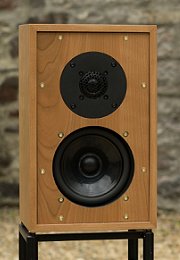 |
|
This model has just been introduced. It is the same size as the Spendor BC1 (63.5cm. x 30cm. x 30cm.) and has similar drive unit configuration (but not the same drive units). The crossover frequencies are 3.5khz and 14khz. As with the BC1 the lower crossover avoids the critical mid range. The LS8/1 was designed by Derek Hughes (the son of Spencer Hughes who designed the BC1). As might be expected, we have compared the performances of the LS8/1 and the BC1.The LS8/1 is illustrated right without its grill. LS8/1 v BC1 The Spendor BC1 is an iconic classic product which gives an outstanding performance in respect of accuracy and realism. It is still used as a reference against which other speakers are judged. Its weakness lies in its limited capability with heavy bass, especially that commonly found in some synthetic pop music. Heavy metal and the like need to be played with some caution. The BC1 is at its best with acoustic instruments and human voices. Having run our initial tests on the LS8/1 we can report that it is about as good as the BC1 at what the BC1 is good at i.e. lower midrange upwards. We can't say it's better. Just about the same. Where it is significantly better is in the way it handles bass. Here it is much more secure and robust than the BC1 and handles heavy metal/pop music without anxiety. It is thus a universal speaker. It also eclipses to some extent the very good Graham LS5/9. So is it better than the BC1? Our verdict has to be "yes". We now know the price is £4712 per pair. For domestic use (i.e. rooms not enormous) we can't see any need to spend more.
|
 |
|
ABRIDGED PRICE LIST This is a shortform list indicating some of the items we like and recommend. All prices include VAT. This tax applies in the UK but not to exports. AMPLIFIERS Graham Slee Proprius power amplifiers with volume controls (pair of).
2 x 26 watts. Very capable. £1299. For pre-owned Quad 33/303, AVI 2000 Series and AVI Lab. Series see John Townrow Classic and Vintage. SPEAKERS Box Design (Project) Speaker Box 5. Bookshelf size and actually quite good. Little point in spending more on new speakers unless substantially more. £249 (pair) For pre-owned Spendor BC1 and others see John Townrow Classic and Vintage. ACTIVE SPEAKERS AVI (new models). Sadly nothing available. For pre-owned AVI ADM9, DM10 etc. see John Townrow Classic and Vintage. RECORD PLAYERS CARTRIDGES Ortofon OM5E (mm). £52.50 PHONO STAGES Project Phono Box MM. £59 RECORD CLEANING MACHINES Knosti Generation II. £90 CD PLAYERS Box Design (Project) CDBox S3. £399 STREAMING Box Design (Project) Streambox S2. £269 DACS (digital to analogue converters) Graham Slee Bitzie. USB powered. Has analogue output and volume control. Also functions as a headphone amplifier. £350 LEADS RCA/Phono standard pair. From £22 ACCESSORIES Origin Live Cartridge Enabler. £30 |


